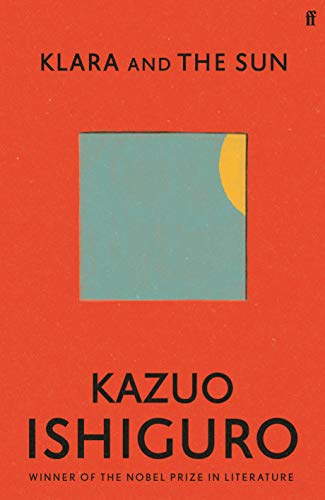
Klara and the sun
Faber & Faber, 2021
307 p.
ISBN: 978-0-571-36487-9
It’s already 2024 and all the literary meetings are back! Donostia Book Club starts on January, 8th with the latest published book by a 2017 Nobel Prize winner in Literature, Kazuo Ishiguro. Klara and the Sun (2021) is a dystopian novel that has a lot in common with one of his previous books, Never Let Me Go (2005).
Klara is an AF (Artificial Friend), an android. She watches the street from the store window and impatiently waits for the day when some child chooses her. The novel makes us question what makes one human, what feelings are, if they can be learned and to what extent artificial intelligence can be like us. A book that raises many moral questions and leaves us heartbroken by its heartless and, unfortunately, very realistic ending.
The plot I mention above is just the main storyline in Klara and the Sun and there are many more interesting moral issues that invite a reader to reflect on how our lives are changing and the influence of the technology on many of their aspects.
The novel is written in a clear and simple style that makes all these questions even more alarming, causing an even stronger impression on the reader. If you think you might find it interesting, join us to discuss the book at our meeting! You can also use some of the questions below (provided by Penguin Random House) to reflect on it yourself:
- The setting of Klara and the Sun is sometime in the future,
when artificial intelligence (AI) has become more
integrated into human society. Which elements of the
novel felt familiar to you at the time of reading, which felt
hard to imagine, and which were easy to imagine as a
possibility for your lifetime?
- Klara is prized for her observational qualities as an Artificial
Friend.
How do the tone and style of her first-person narration help
to convey the degree of her attention to detail?
- Does the term “Artificial Friend” resonate at all with you now,
as a contemporary reader in the age of social media and the
internet? What’s the difference in the level of interaction
between children and their “artificial” versus their real/human
friends?
- The details of Josie’s illness are kept vague. Based on what
we learn from the conversations among Helen, Chrissie,
Paul, and Rick about the choices parents make for their
children in this world, how might that have affected Josie’s
condition?
- What does Klara’s connection to the Sun suggest about the
nature of her inner world? Is her understanding of its power
based mostly on what seems to be the plain facts of her
existence—that she is powered by solar energy—or
something deeper?
- Rick and Josie carry on a quiet but intimate relationship
through their drawings. What is unusual about their
friendship and their plan for their future, given the social
hierarchy for children based on their class and economic
privilege?
- Discuss Klara and the Mother’s trip to Morgan’s Falls
together. How does the natural setting help the Mother to
reveal some of her vulnerabilities and fears? Why do you
think the Mother makes the choices she does for her
daughter?
- Discuss the scene at the diner with Helen, Rick, and
Vance. How are these concerns about a child’s ability
to succeed, and the measures that people will take to
alter those outcomes, similar and different from what
happens in society now? Were those efforts to win
Vance’s favor fruitful in the end? What might Rick
have been able to do to advance society’s dependence
on technology had his drone development and other
engineering been supported?
- Who, in the end, seems more human to you—the
people in the novel, or the AFs?
|

